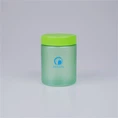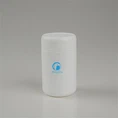Prescription bottles are small and widely used, but many people are surprised that pharmacies don't accept them back for recycling. At first, it seems practical to reuse these containers, yet several obstacles prevent pharmacies from doing so. Below are the key reasons, along with alternatives for consumers.
1. Material and Size Challenges
Prescription bottles are usually made from polypropylene (PP) or high-density polyethylene (HDPE). These plastics are recyclable, but the small size and lightweight design make them difficult to process in municipal recycling systems. Many bottles slip through sorting machines, ending up in landfills instead of being recycled.
2. Privacy and Label Concerns
Every prescription bottle carries a label with patient information and drug details. In the United States, for example, pharmacies must comply with HIPAA regulations to protect personal data. Removing labels and adhesives is time-consuming and adds cost, which makes direct pharmacy recycling impractical.
3. Safety and Contamination Risks
Leftover drug residue inside bottles can create health and safety risks. If bottles are not properly cleaned and sterilized, recycling plants may face contamination problems. For pharmacies, guaranteeing residue-free returns would require special handling processes, which are rarely cost-effective.
4. Regulatory Restrictions
In many regions, laws do not allow pharmacies to reuse prescription containers. For example, the FDA in the U.S. prohibits reusing prescription bottles once they have left the pharmacy, even if they look intact. This regulation ensures patient safety but also prevents pharmacies from setting up take-back programs.
5. Limited Collection Infrastructure
Unlike beverage bottles or cans, prescription bottles lack a nationwide return or deposit program. Without a consistent collection network, pharmacies would have to manage storage, transportation, and disposal on their own, which is not economically feasible.
What Can Consumers Do Instead?
Although pharmacies don't recycle prescription bottles, there are still ways for consumers to handle them responsibly:
Local recycling centers – Some municipalities accept small PP or HDPE bottles. Check your local guidelines.
Label removal – Peel off, soak, or black out personal details before recycling.
Repurposing at home – These bottles are handy for organizing screws, beads, sewing supplies, or travel-size toiletries.
Special recycling programs – Organizations such as Matthew 25: Ministries in the U.S. collect clean prescription bottles for reuse in humanitarian aid. Some mail-in services also exist for hard-to-recycle plastics.
















